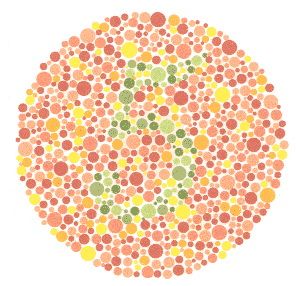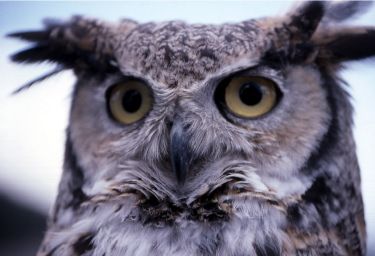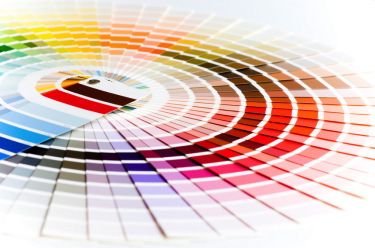A page from the "Causes of Color" exhibit...
Other light and color issues

How do colorblind people see? Can we see better than animals? How do we find a common language to model our concept of color?
The vision of colorblind people poses many interesting questions. Colored plates with numbers or symbols are used to establish the type of colorblindness a person experiences.
The cause and severity of colorblindness varies widely. Understanding how colorblind people see helps us to meet the challenge of creating media that will not be ambiguous for this portion of the population.
Vision across the animal kingdom takes a multitude of forms, from very simple light detection to multichromatic light analysis. There are fish, birds and insects with color recognition far superior to that of humans, opening up new perspectives on how our world appears to eyes and brains in other species.
Artists, philosophers and scientists have searched for ways to classify and quantify our perception of hue, intensity and luminosity. Over the centuries a variety of models have emerged to create a common language of color, often specific to the needs and knowledge of a particular field. Our understanding of how the brain processes color has evolved, particularly as technologies such as film, color monitors and digital imaging create the need to measure and replicate light and color conditions in an exact way.
Looking at what can go amiss with our color perception, how color vision is achieved by birds, insects and animals, and how we understand and communicate colors we perceive, provides a background to understanding the causes of color, and opens up new questions of infinite variety and hue.









